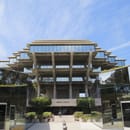Breast cancer is the most common cancer to affect women in the United States. However, there are numerous misconceptions surrounding the disease that are harmful. They decrease true awareness of what breast cancer is, who it affects, and inaccurately portray the procedures used to detect the cancer. Below are a compilation of common fallacies and the factual evidence that refutes these myths.
Myth: Breast cancer is not something that happens to younger women.
Fact: Breast cancer does occur in women outside of the middle-age and older range. 4% of women diagnosed with breast cancer in 2017 were less than 40 years old. It is necessary to acknowledge that breast cancer does not discriminate based on age. Do not assume breast cancer is not the causation of worrisome symptoms.
Myth: Only women get breast cancer.
Fact: Although far less frequent, men can be diagnosed with breast cancer. In fact, due to the common misconception that men cannot have breast cancer, they are often unaware of or ignore their symptoms. This results in a higher mortality rate for men.
Myth: Breast cancer is hereditary and you should not worry if no one in your family has been diagnosed.
Fact: Most patients diagnosed do not have a family history associated with the cancer.
Only a minimal amount of breast cancers are hereditary, about 5-10%. However, this does not mean that family history should be entirely ignored. Share this information with your doctor.
Myth: All breast cancers are deadly.
Fact: Not all breast cancers are life-threatening. However, doctors are not able to tell whether or not the cancer will become harmful in the future.
Myth: If you have breast cancer, you will be able to find a physical lump in your breast.
Fact: Although this may be true at times, there will not always be an identifiable lump. It is very common in the early stages to not find one. In order to prevent possible spreading, it is important to go beyond a self-exam and have annual professional exams. Annual mammograms are recommended after the age of 50 but can be done earlier based on physician recommendation.
Myth: If a lump is painful or is smooth and able to move around, it is not breast cancer.
Fact: The majority of lumps are non-cancerous. However, this is a dangerous assumption to make, as all lumps need to be checked by the doctor. There is always the possibility of the mass being cancerous.
Myth: The radiation emitted by mammograms actually increases your risk of cancer.
Fact: The amount of radiation you are exposed to is minimal and is far more beneficial than damaging. This is a necessary presentative measure and is worth the minimal risk.
Myth: Mammograms on a yearly basis assure finding breast cancer at its early stages.
Fact: Not only does a mammogram have the potential to not pick up cancer (especially at the beginning stages), it also has the potential to give a false-negative. Therefore, It is necessary to practice both self-exams and annual mammograms at the recommended ages. This allows you to notice changes, as you know your body best, and also have a professional opinion.
In order to combat breast cancer, we must remain informed about the misconceptions that bombard us on a daily basis. Continue to educate yourself and share with your friends and family. Awareness is power.
Sources: National Breast Cancer Foundation Inc, BreastCancer.org, Breast Cancer Now, BC Cancer, Health.com



